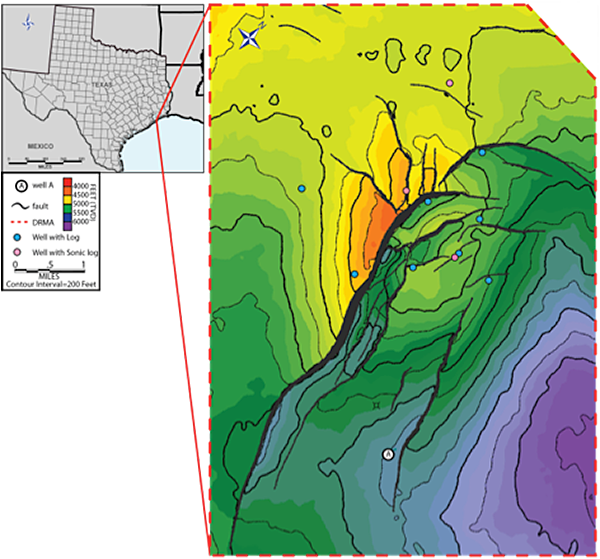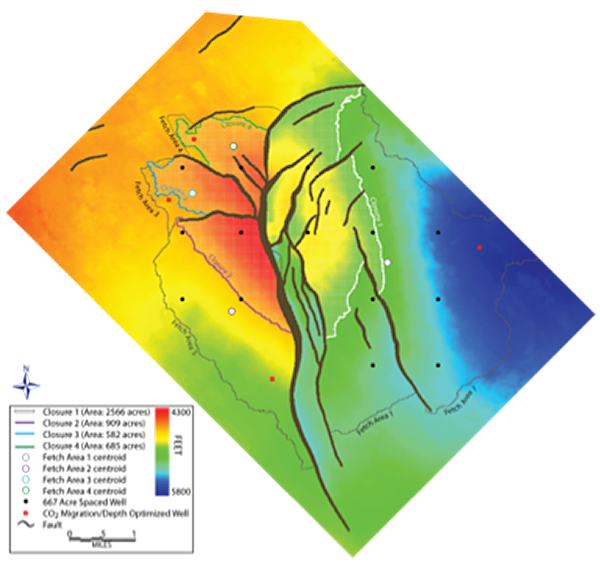Research Theme 1

Structure map of the top of model interval. Click map to view larger.
Reliable Capacity Estimation
Theme 1: Reliable Capacity Estimation [PDF]
The goal of this theme is to improve techniques for estimating storage capacity to account for the major impact of the interaction of multiphase flow, boundary conditions, maximum pressure, and geomechanics. Capacity estimation is one of GCCC's strengths, and we have continued to strive to develop more sophisticated and accurate methods of estimation, as appropriate, for various storage environments.
Accomplishments
- Generated southern Georgia, Permian Basin, and upper Texas coast Miocene static regional capacity estimates.
- Used data from the petroleum system of the Gulf of Mexico as inputs for modeling engineered, anthropogenic CO2 and dynamic capacity.
- Validated geomechanical models using dense datasets from above-zone monitoring intervals (AZMI).
- Generated code (EASiTool) that incorporates multiphase flow, boundary conditions, and geomechanics.
- Evaluated the confining system (top seal and fault seal) of the upper Texas coast Miocene section.
- Collected three high-resolution 3D (HR3D) shallow seismic (aka "P-Cable") datasets to evaluate the overburden section of future potential geosequestration sites in the upper Texas coastal Miocene section.
Reliable Capacity Estimation Subthemes

Closure and fetch area polygons plotted with subsurface structure of the top of the model interval. Click map to view larger.
- Topic 1—Natural Analogs, Data, and Models [PDF]
The petroleum system of the Gulf of Mexico (GoM) was considered as a natural analog for future engineered, anthropogenic CO2 storage developments. The Miocene-age section of Texas State waters was selected as a most promising subset. For more on this work, please see the Texas Offshore Miocene project. - Topic 2—Regional Capacity [PDF]
Most CO2 storage is likely to occur as volumetric trapping (capacity in available pore volume at in situ reservoir conditions) in deep saline formations in regions having favorable source-sink relationships. Our goal was to provide static CO2 storage capacity estimates in such regions. - Topic 3—Geomechanical Implications [PDF]
We developed fully coupled analytical formulation and numerical simulation methods for the reliable estimate of pressure limit to maximize storage capacity while avoiding geomechanical failures. - Topic 4—EASiTool [PDF]
The novel EASiTool software package produces a fast, reliable estimate of storage capacity for geologic formations. - Topic 5—Confining Systems [PDF]
Mudrock units in two Lower Miocene cores were evaluated as to mineralogy, petrography, pore distribution, and fabric alignment. For more on this work, please see the Texas Offshore Miocene project.
Personnel
- Susan Hovorka
- Tip Meckel
- Ramon Treviño
- David Carr
- Seunghee Kim
- Seyyed Hosseini
- Jiemin Lu



